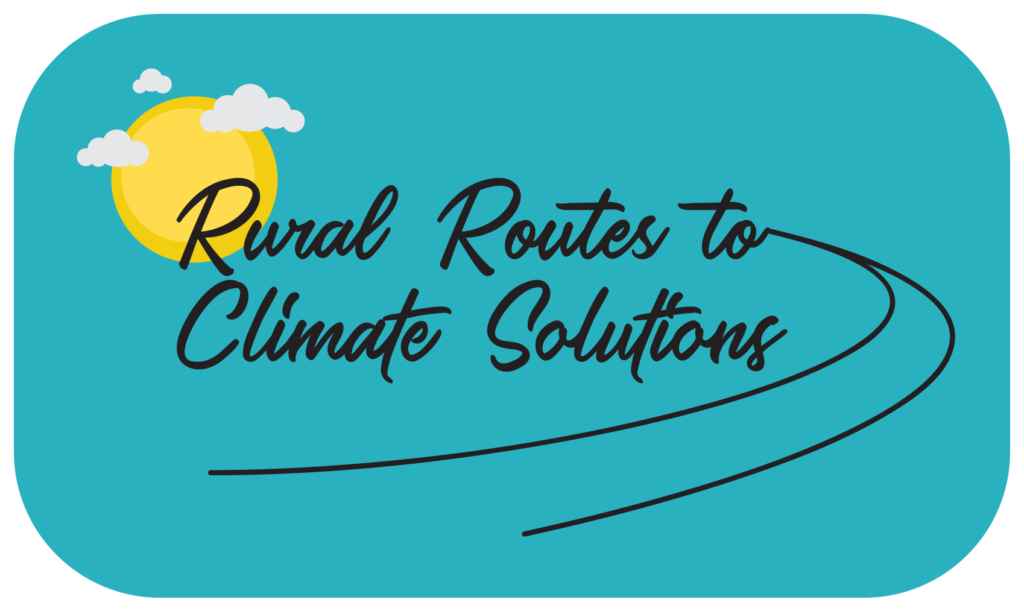In Conversation with Rachel Herbert – Trail’s End Beef
Striving for sustainability – economic and ecological – on a family-run ranch in southern Alberta
‘Sustainability’ is what drives the Herbert family, owners of Trail’s End Beef, a grass-fed and finished beef ranch, nestled outside of the town of Nanton, in the Porcupine Hills of southern Alberta. Rachel and Tyler, with the help of their two children, practice rotational grazing management and steward the native grasslands, rolling hills, abundant springs, and sheltering poplar and willow groves. They raise calves entirely on pasture (and stored forage through the winter) until they’re 26 to 29 months-old, and direct-market the beef to a diverse customer-base in southern Alberta.
The Herbert family ranches with an ethic for animal care, and environmental stewardship and regeneration, protecting watersheds, planting cover crops, and allowing the land to rest between grazing. They share the native grassland with a variety of wild ‘neighbours’, including elk, deer, songbirds, beavers, coyotes, cougars and grizzly bears.
This deep commitment to land stems from a century-year old relationship with ranching in the Porcupine Hills. The Herbert family is rooted five generations deep on the native grasslands.
Rachel is a passionate rancher, writer, and advocate for grass-finished beef. She has her MA in Ranching History at the University of Calgary. Rachel is also the author of Ranching Women in Southern Alberta, a book that “pays homage to the brave and talented women who rode the range, carving out a role for themselves during the dawn of the family ranching era”.
RR2CS: Ranching is in your blood. You come from a long lineage of ranchers – you’re a fourth-generation rancher. How does that history influence the way you farm?
When we started Trail’s End Beef, my husband, Tyler, and I asked ourselves: what can we do to keep the ranch and land vital? For us, grass finishing was a way to make a living off the land, but on a smaller-scale. We were starting out from scratch – with only a little piece of the family land and a few head of cattle. While grass finishing does amazing things for our landscape, it also creates a niche, financially speaking, allowing us to do a little bit more with a smaller land-base. Over the past century, my family has adapted and tried to find different ways to make a go of it on the ranch. For example, my great-grandmother ran a guest ranch in the Great Depression of the 1930s, and later during WWII, to supplement farm income. We’ve had to adapt to many challenges over the years.
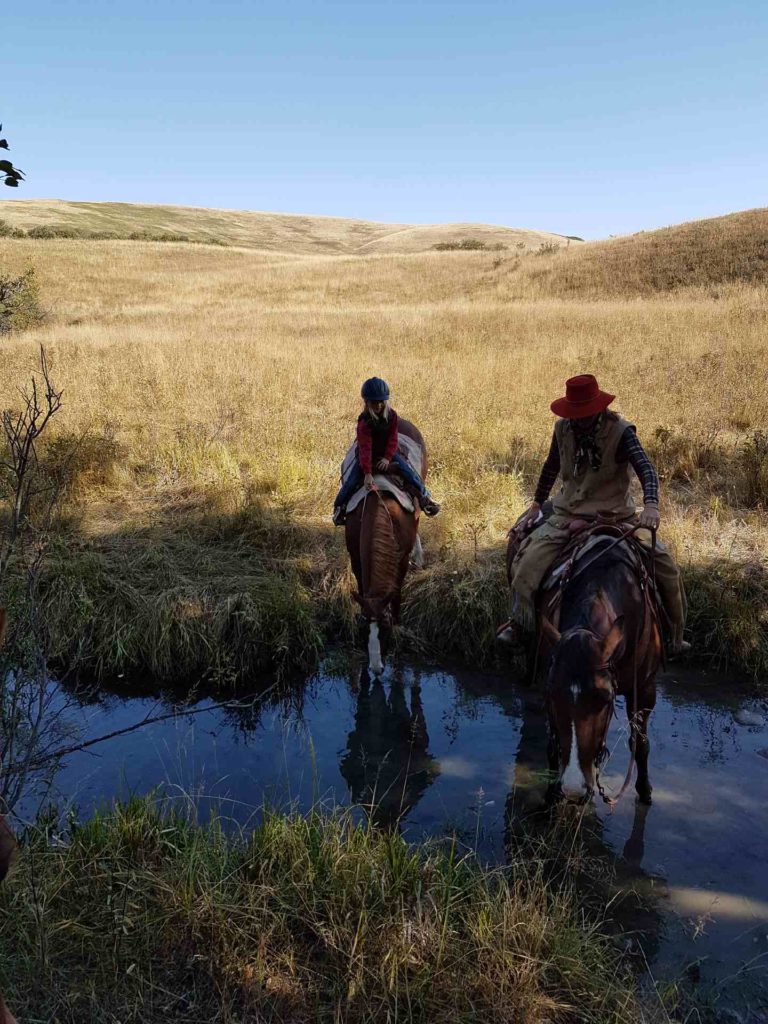 RR2CS: As a rancher, have you seen changes in the climate, or weather patterns over the years?
RR2CS: As a rancher, have you seen changes in the climate, or weather patterns over the years?
Absolutely. When we first started out, we were witnessing amazing years of rain and healthy grass, but the last several years have been really dry, which has resulted in lower production and skyrocketing hay prices. Our area has recently experienced about 3 to 4 years of drought cycle. It’s made us reflect on how we can adapt our grazing management and what we can do to input, or off-set the hay prices. We’ve seen a direct economic link between drought conditions and our ability to afford the stored forage that the cattle need to get through the winter months.
RR2CS: What kind of climate related challenges have you encountered?
Our ranch is in the Porcupine Hills, which is part of the Oldman an River watershed. It’s all spring-fed. We have beautiful water quality from the spring; typically the volume is just amazing. When we started Trail’s End in 2003, my mom did a lot of work on the spring to improve riparian management. Together, we developed two areas with water troughs. The spring usually gushes, feeding our house, a couple of cattle troughs, and a stream that turns into Nanton Creek further down the valley. Like so many other ranches in the area, these springs are vital to the water flow in the South Saskatchewan river basin. From the mountains through the hills, these springs water the prairie.
In November 2018, the spring dried up – there wasn’t one drop of water coming out. According to my family, the only other time that had happened had been during the deep drought of the 1980s. We can make due with grass shortages – we can bring it in from elsewhere, if need be, but water is the life force. After the spring dried up, we had to get really creative. We were hauling water up to the hills to water the calves at weaning time. It was very challenging. In the fall of 2019, we weren’t sure how we’d manage late season grazing. And then, in September, it snowed 3-4 feet in southern Alberta in a matter of days. It was wild, totally unprecedented. People were freaking out and complaining, but we were so happy because the spring started again! Now the stream is full again. Everything is running.
But that drought cycle, for us, really made us realize that water is our top priority as we’re experiencing a shifting climate.
RR2CS: How does a feedlot model use water differently than a grass-finished operation?
In a feedlot, the cattle never move from their pens. It’s like being at home – if you need water, you turn on the tap. But if you go for a hike, you need to pack water with you. The same thing for the cattle. When we’re grazing extensive land, big fields, our cattle are not standing in the corral, drinking from a trough or drinker. We have to be able to manage access other water sources, whether that’s springs, or streams, or dug-outs – whatever it is. For us, the water management is a big part of how effectively we can graze.
We practice rotational grazing, which means grass in the pasture is eaten, trampled, and fertilized. This grazing stimulates grass growth, and we move the onto another pasture. The biggest factor in pasture rotations is water access. We have to think: how can we best manage those grasses and provide water access? A solar powered off-site watering system helps make best use of some pastures. We can adapt it to work from a well, dugout or spring which really opens up our options for grazing.
 RR2CS: Trails End operates with an ethic for water, riparian zones, and natural habitats. Can you talk about some of those interactions with the wild spaces on your land?
RR2CS: Trails End operates with an ethic for water, riparian zones, and natural habitats. Can you talk about some of those interactions with the wild spaces on your land?
Our land is essentially what we call ‘wild space’ in Alberta. It’s open grasslands. It’s creek bottoms and bush and shelter. We strive to work with the grassland ecosystem.
Today, the land in the hills has way more willow coverage on it now than it did when agriculture in southern Alberta was first taking off, in the late 1880s. If you look back in photos, the bison had been clearing and keeping the grasslands quite open. Since then, we’ve seen a spread of the willows and the poplars. Recently, we’ve done some clearing of willows in the hills to open up grazing. Now those open meadows are thriving – and it’s inviting wildlife back onto the land.
Last summer, we were sitting out on the back porch, looking out into the clearing, when I noticed two black bears in the “meadow” where we usually see moose and deer. Fifteen minutes later, I noticed the bear had come back. “That is not the same bear!” my husband said. It was a huge mama grizzly in the same space – with two tiny cubs, and a second smaller grizzly. Four grizzlies! In the same evening, we could see a coyote den in the clearing and little trails from the den. The pups were out playing. The grizzlies went all the way to the dugout, where they had a drink. And the coyotes followed, probably hoping for the bears to scrounge up something to eat. We watched them for over an hour, while watching moose and deer come back into the meadow. We thought “some people go to Africa on safari and we have the same experience in our own backyard.” It felt like we were on an African safari!
RR2CS: Wow! That story alone speaks to the biodiversity on your land.
We’ve seen bears before. There’s a mama grizzly with cubs who’s always somewhere on the ranch. But that was our highest bear sighting, to date. In terms of family, or community lore, we’re seeing more bears and cougars in the Porcupine Hills, and foothills, than in the past. We are really aware that we’re sharing the land. If we’re out riding, we make noise to warn bears, although we’ve never had a negative interaction from sharing the space with bears.
RR2CS: What does sustainability mean to you?
It’s something I think about all the time. Sustainable is such an all-encompassing term: your landscape has to be sustainable. Your business practices have to be sustainable. Your family needs to be able to eat. You’re also planning to leave something behind for the future generation. We use the term “sustainability” so loosely. It gets thrown around for marketing purposes. There’s green washing. But it feels so much deeper, when you’re genuinely trying to make a life on the land.
I’m a fourth-generation rancher here. There’s been three generations before me that have been able to make a life on the same land. I feel like there’s a lot of obligation that comes with that term “sustainable”. Responsibility. That’s been one thing I’ve been trying to wrap my head around these days. How do I truly make what we’re doing sustainable? How do we keep grazing cattle on a land that stays intact, and more than that, how do we leave it better than we found it? My husband and I talk about this – a lot.
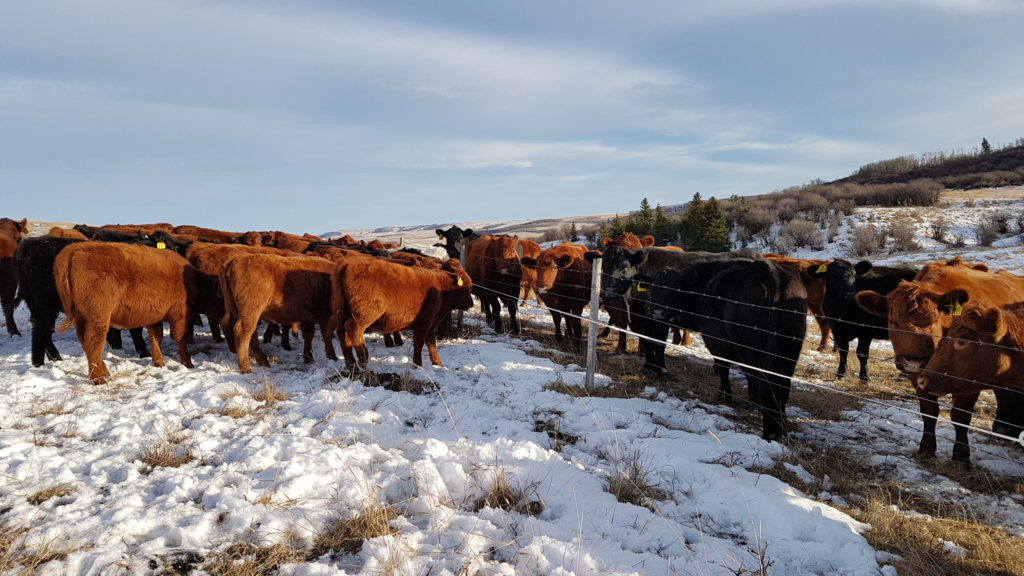 RR2CS: It seems like sustainability is a lifelong struggle, in a way.
RR2CS: It seems like sustainability is a lifelong struggle, in a way.
We always feel like our management is a bit of a puzzle, in part, because we don’t have ownership of all of our land. On our own land, we can absolutely make our own management choices. But on rented land, it’s a different story.
Last summer, due to the grass shortage, we rented a new quarter with a creek flowing through it to graze our cattle. That land was fairly degraded. After some years of hard grazing and drought, there were more holes, rocks, and weeds than grass. There was no fencing for the riparian areas, to keep the cattle off the water, or fences to rotate them on the grass. The owners were driven more by economic means than ecological ones. That was really difficult. We were in a position of needing grass, but the practices we used on that piece of land were so counter intuitive. It made us reflect: are we going to use that piece next year, knowing that the owners aren’t going to invest in the infrastructure that’s needed to improve the land and protect the water.
This summer, however, with the ample rain and using portable electric fencing we are really happy with the change in grass on this piece of land. The cattle are still watering from the creek, but we are optimistic that going forward we’ll continue to see gains. On other rented land we were able to secure a grant through the Oldman Watershed Council. That enabled us to fence a dugout so that we could use our offsite watering system and protect the water supply. It is just a matter of being flexible and creative to adapt best practices when and where we can.
Sometimes you’re at the mercy of what life throws at you, but ultimately you have to think, this wasn’t optimal, but we were able to make gains elsewhere. For example, this year with the land in the hills, we had more grass than was needed. The water supply came back at the right time, so a lot of our land got more of a rest up there. It’s always a give and take.
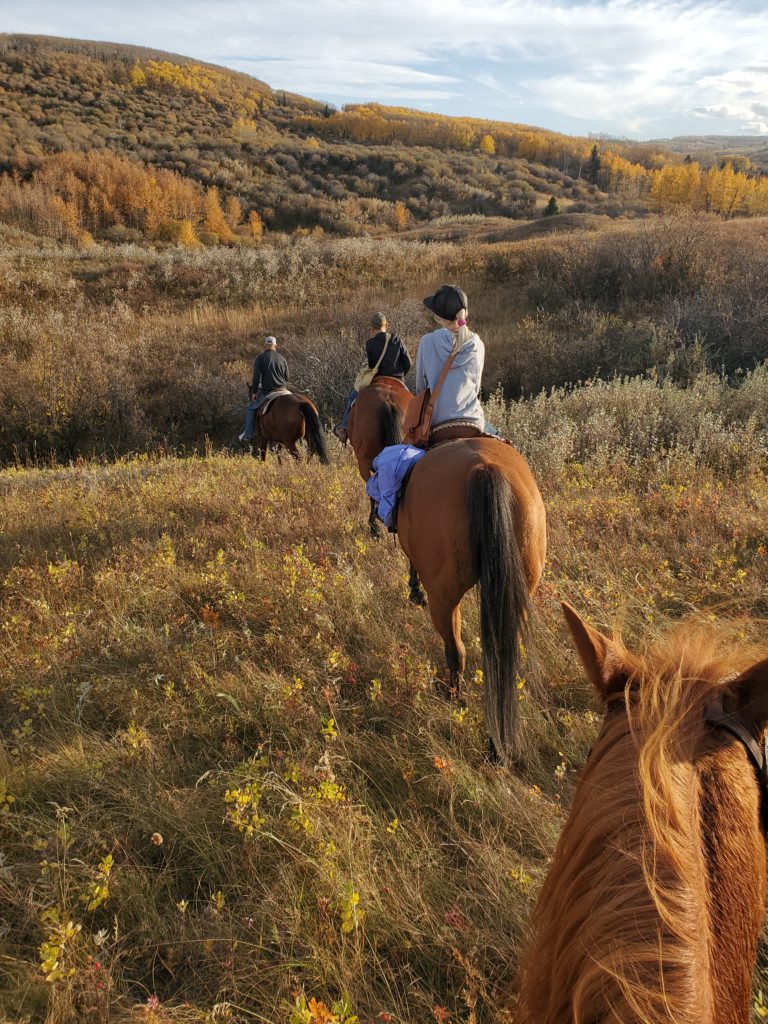 RR2CS: Trail’s End has a unique niche in the market since you do direct marketing of your grass-finished beef. Do you think consumers are coming to you because you ranch with an ethic for ecological practices?
RR2CS: Trail’s End has a unique niche in the market since you do direct marketing of your grass-finished beef. Do you think consumers are coming to you because you ranch with an ethic for ecological practices?
Our customer base is really diverse. Some want that direct relationship with the food producer, others come to us because the cows are grass-fed and finished. There’s a lot of different motivating factors. Some of our customers are ecologically, or environmentally motivated and driven to purchase from us.
Meat production is taking a bit of a beating right now on social media, or in the news. Some of this is based on misinformation. The cattle industry is often blamed for environmental degradation. However, on grassland landscapes, cattle producers are often those most in touch with the land. Many are doing an amazing job of stewarding the land. Cattle are an integral part of the southern Alberta ecosystem. I wish that story was more wide-spread amongst the public.
Everyone wants to tell a “sustainable story,” but we have to look at the whole industry. For me, personally, the good that can come from eating beef and raising beef on the grasslands, which is ecologically integrated, can be undermined by the conventional feedlot model and the mass production and consumption of meat. That’s where I see our weakness in being able to communicate with the public. From both extreme sides of a vegan agenda and an industrial food agenda, there hasn’t been a great middle ground, but that is changing and practices throughout the cattle industry are improving.
RR2CS: Do you think that farming can be a solution to mitigate the effects of climate change?
Absolutely. I don’t think there’s any other industry than farming that’s more connected with the environment as a whole – weather, climate, water cycles. Everyone needs to eat. The way that we produce our food has the potential to make huge impact on our environment. There’s no one better positioned to look after the land, and be compelled to look after it, than people who are making a life and a living on the land.
Whether people are using conventional agriculture models, or the latest in regenerative practices, everyone is doing their best to continue to grow food. Some farmers are motivated by higher production – and that’s fair. But some of us want better quality of production. At Trails End, we’re not trying to produce more, we’re trying to produce quality in harmony with the environment.
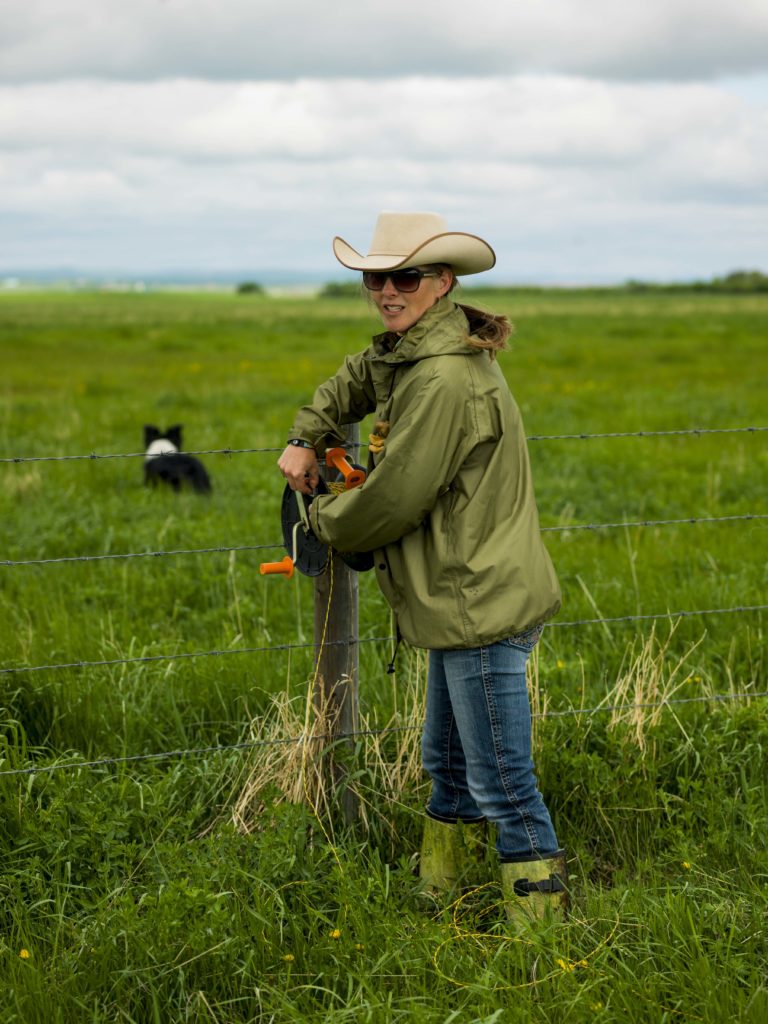
Trail's End Beef
Rancher and author, Rachel Herbert was born and raised in Calgary, Alberta. The great-granddaughter of pioneer ranchers, but a long-time vegetarian, she returned to her roots and the family ranch near Nanton, Alberta. Alongside her husband, Tyler, she raises and direct-markets grassfed, grass-finished beef. They are the fourth generation, raising the fifth, to live, play, and work on the land at Trail’s End. When she’s not feeding cows or chasing kids, or vice versa, she can be found reading, riding, or getting her hands dirty in the garden. Rachel is the author of Ranching Women in Southern Alberta (University of Calgary Press).
Learn more about Trail’s End Beef – http://trailsendbeef.com



